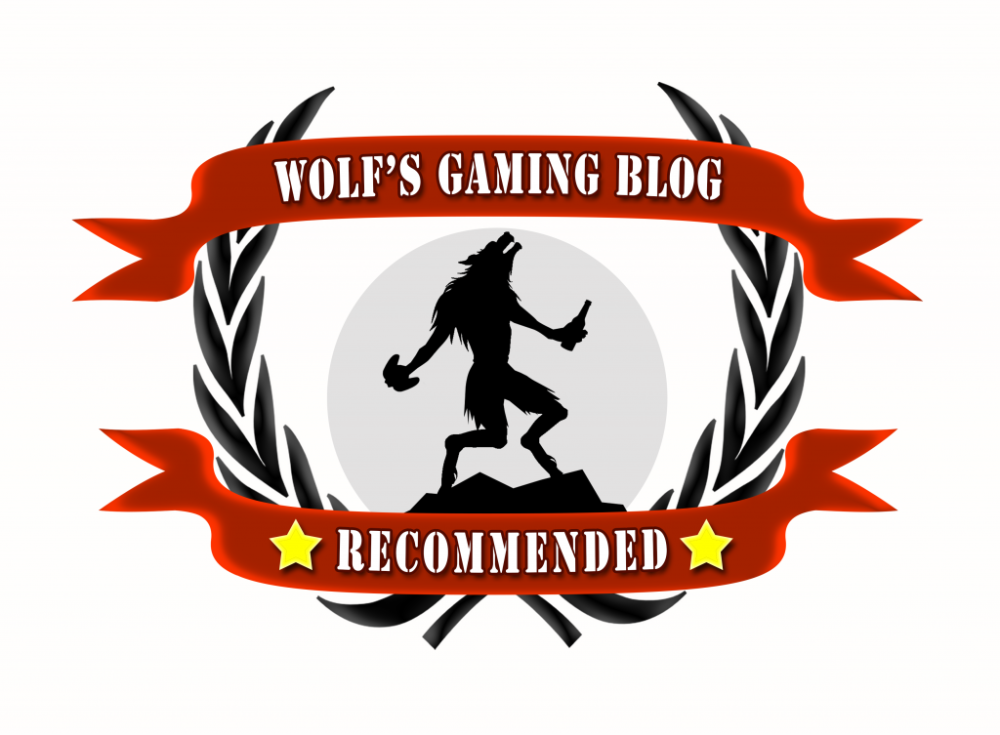Is Mortal Kombat 1 a sequel, prequel or reboot? It’s a trick question, fool, the answer is all of them! The latest entry in the long-running franchise features a timeline crafted by the Keeper of Time, meaning it takes place during the earliest Mortal Kombat tournaments. And on top of that its also a sequel, taking into account the crazy events of the last game while paying homage to MK titles from the PlayStation 2 days.
The timeline reboot brings with it quite a few big changes to established canon, like how Sub-Zero and Scorpion are now blood brothers (and Smoke is an adopted brother) or that Baraka is now longer a Tarkatan, but rather someone who has been afflicted with the Tarkat plague. Newcomers won’t be bothered with any of this, but as a series veteran, it was interesting to see what Netherealm decided to tinker with in a bid to refresh their long-running series. Like how Reptile now looks like a member of a boy band. Well, when he isn’t actually being a reptile, anyway.
Although this is technically a reboot of the franchise built upon Liu Kang’s victory and subsequently becoming the Keeper of Time in Mortal Kombat 11, it’s also a proper sequel that carries on the story by taking the events of the last game and using them in fun ways. I won’t spoil any of the absolute craziness that occurs, though. And yet despite said craziness, the argument could be made that this is a rather safe Mortal Kombat story that plays out using the same formula we’ve come to expect from modern MK titles.
Available On: PS5, Xbox Series S/X, Switch, PC
Reviewed On: PS5
Developed by: Netherealm
Published by: Warner Bros.
In Mortal Kombat, 1 we find a vastly more peaceful version of the universe than we are used to. Having forged a new timeline with less bloodshed, Liu Kang has surrendered the powers of time to become Earthrealm’s defender and God of Fire. Raiden is now a humble farmer along with his best friend Kung Lao, though both of them have been secretly groomed by Liu Kang to become potential champions in the upcoming tournament between Earthrealm and Outworld. Unlike before, these tournaments have helped keep peace between the realms. However, some nefarious figure has been tampering with the fabric of the new timeline, specifically in order to bring long-time series villain Shang Tsung out of his obscurity and back into his former power.
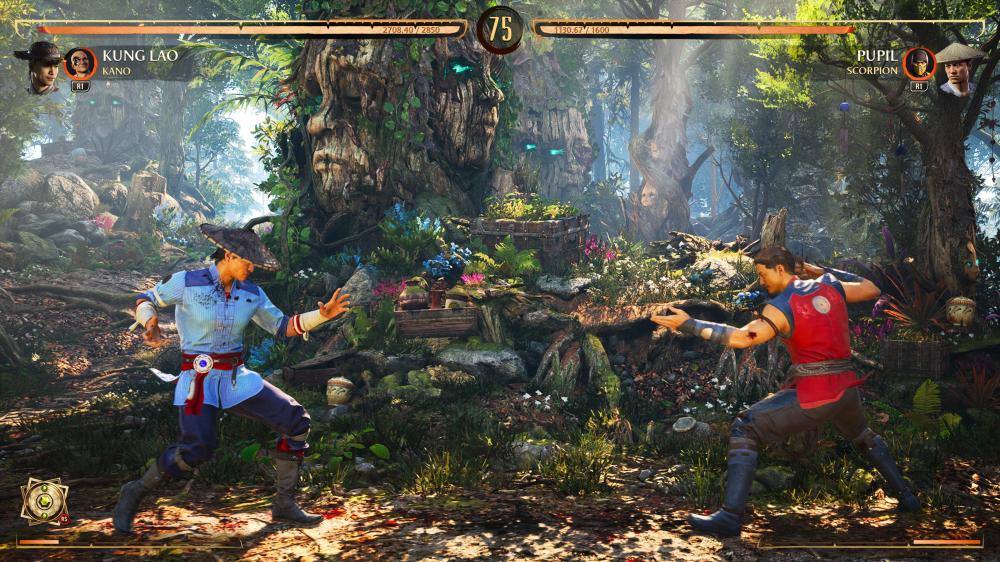
The Mortal Kombat games have become known for having lavish cutscenes packed with plenty of cheese, insanity, melodrama and odd humour. I’m pleased to say that Mortal Kombat 1 is no different, basking in the madness of a series that has had heaps of crazy moments. Highlights here include a surprisingly fun bromance between Johnny Cage and Kenshi, the return of Reptile, numerous nods to past events and games like Deadly Alliance and a batshit finale that jumps the shark, rips it in half and throws the pieces at the camera. Does everything land? Of course not. There are always going to be people unhappy with how certain characters get treated, and I did note a few rough patches in the writing where events have jarring jumps or the writers seemingly just forget about things. At one point, Sub-Zero seems to vanish from the story, for instance.
One thing I really appreciated was how the tone and style have gone back to being more martial arts-orientated. The recent games, especially MK11, were much more heavily focused on military with plenty of guns in the mix which felt a little out of place in the Mortal Kombat series. With the reboot, Netherealm has used its gorgeous cutscenes to bring back that cinematic kung-fu movie feel.
Meanwhile, the performances are pretty good across the board, with a special mention having to go to Alan Lee for his role as Shang Tsung. He took the character’s sleazy, weasel personality and decided to go completely nuts with it. Shang Tsung oozes slimy charisma, making it fitting that our introduction to the story is a young Shang Tsung going from town to town trying to sell magical cure-all medicines. Tsung as a snake-oil salesman is perfection.
Unfortunately, there is one weak member to the otherwise excellent cast, and that’s Megan Fox as Nitara. Netherealm has dabbled in having bigger names lend their voices to the series in the past, notably Ronda Rousey in the last game, and it hasn’t gone well. On paper Megan Fox makes a lot more sense – she is, after all, an established actor. True, her IMDB page isn’t chock-full of masterpieces, but compared to Rousey she’s got heaps of experience and she’s great in Jennifer’s Body. Plus, Fox is a fun choice for a vampire character given her own proclivities. But man, Fox’s performance her is completely flat and lifeless. There’s no range in her performance, just a monotone delivery that kills the character. Thankfully, Nitara only plays a small part in the storyline.
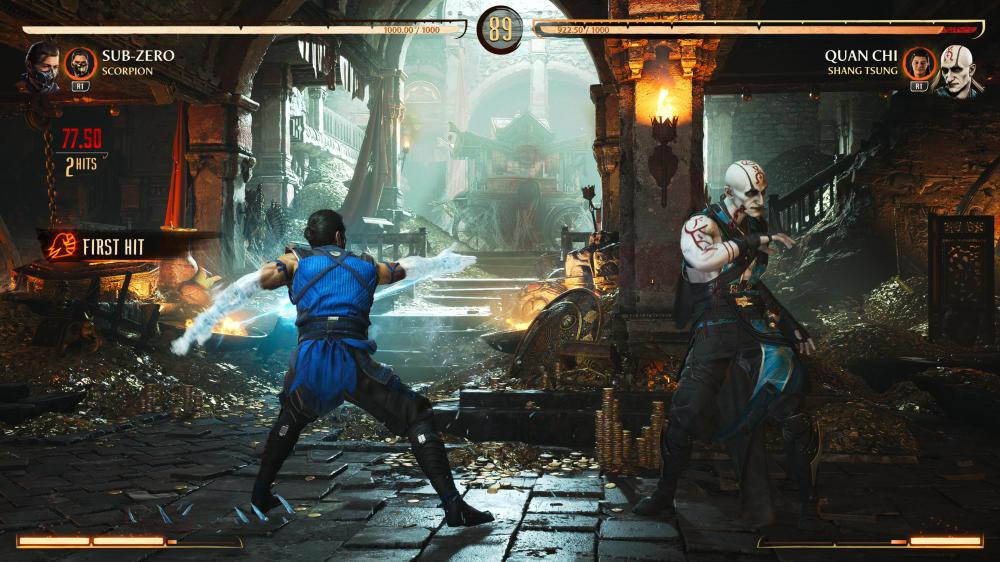
Slightly surprisingly, the story mode has ditched the ability to choose characters at the start of each new chapter, an idea that was designed to add more replay value to the campaign. That might be because of the new Kameo system that lets you briefly tag in a second fighter during matches. We’ve seen Netherealm dabble in systems like this before in the likes of MK 9 and MK11 but this is considerably more fleshed out. Whenever you select a fighter you also choose a partner from the eleven Kameo fighters. Netherealm uses the Kameo roster to throw in a bunch of classic fighters like Jax, Sonya Blade, Kano and more, while a couple of them are also on the main roster such as Scorpion and Sub-Zero boasting their old-school yellow and blue outfits. Inside a match, a Kameo move can be called in using a single button to boost a combo, start one, add extra defensive options and more, but whatever they do is controlled by a meter so they can’t be spammed. They even get their own special Fatalities and Brutalities, though they aren’t as elaborate as the main roster’s moves.
Overall, the new Kameo system is a good addition to the franchise, adding some fun new layers to the combat that advanced players are already doing crazy things with. While I freaking love Mortal Kombat, I’m far from being good at it, so it’s difficult to comment on how well Kameo’s will hold up to sustained, high-level play. There are already very clear tiers of Kameos developing, so I’m sure Netherealm will be attempting to stay ahead of the curve. However, by the end of Mortal Kombat 11’s life there was a quite vocal section of the community unhappy with how the game was balanced. From my low-level perspective, then, the Kameos are a lot of fun to play with, though we have lost a few elements introduced in the last couple of games like Krushing Blows and environmental attacks.
But we have gained aerial combos, allowing for some truly crazy freaking sequences where you launch people into the air, follow up with a combo in the air, use a boosted move to bounce them off the ground and dish out even more damage. Yes, moves can again be enhanced by spending some meter, but the system has shifted back to the older style. The two bars of Mortal Kombat 11 (one for offence, one for defence) have been merged into a single meter that is used for everything. A single chunk of the bar can be spent to enhance special moves or certain combos, adding extra damage or quite often tossing the opponent into the air for a juggle or providing a way to launch into another combo. Two chunks let you perform a Kombo Breaker in case you’re caught in a lengthy smackdown, while 3 chunks can be used to unleash a Fatal Blow if your health is low enough. It’s a solid design and the bar refills at a well-paced rate which makes clever use of the meter important without completely overshadowing everything else.
As for the rest of the combat, it’s mostly business as usual. The pacing of the fighting feels a little slower this time but it’s a speed I like, probably because I’m just not good enough to keep up these days. Blasting out combos and special moves feels terrific thanks to mostly fluid animations, responsive controls and the rock-solid 60FPS on PlayStation 5, although the menus, cinematics and Fatalities are all capped at just 30FPS. Mortal Kombat has always had a stiffer style of play, especially compared to newer fighting games but it’s a style I like. No doubt over the coming weeks and months the incredible fighting community will rip this game to pieces, exposing all of its strengths and weaknesses in ways that I cannot, perhaps comparing it to Street Fighter 6 and the upcoming Tekken 8. But if you’re like me and love picking up Mortal Kombat just so you can smash faces and indulge in some healthy bloodthirst then Mortal Kombat 1 holds up great.
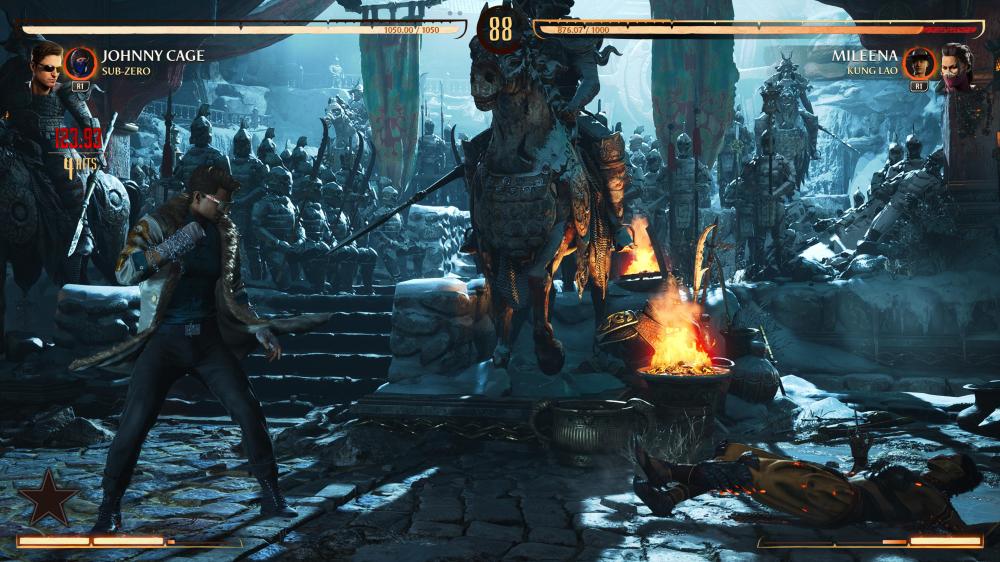
The starting roster is a solid selection that plays to the reboot theme by being made entirely of existing characters without a new fighter in sight. That means we have mainstays like Sub-Zero and Scorpion mixing it up with lesser-known warriors like Reiko, Ashrah and Kenshi. It’s awesome to see older staples making their return to the franchise, and how Netherealm has reworked their origins to keep things interesting. Reptile in particular gets to play around with cool shapeshifting, and Baraka isn’t just a punching bag this time, so that’s nice. And Geras is also back from Mortal Kombat 11, thus giving him the honour of being the closest thing to a new character in the game, although he’s still not all that interesting.
For a full breakdown of all the playable characters, check out my article here.
The campaign will probably take 5 or 6 hours to battle through, following the Netherealm template of swapping out characters every few chapters so that you have to desperately flick through the menus to figure out what the hell you’re doing. Once the absolute batshit insanity of the story is wrapped up there are a couple of options: Invasion mode, online and Towers.
Towers are the simplest to tackle. It’s a basic series of fights one after the other with your chosen character, and making it to the top results in a classic Mortal Kombat arcade ending for your fighter, explaining what happened to them after the campaign wrapped up. This is staple Mortal Kombat content, and as enjoyable as ever if you just want to get a few fights in but like the idea of a reward waiting for you at the end.
Invasion mode is the big new headlining feature and replaces Mortal Kombat 11’s Living Towers as the live-service element of the game. Early previews described this mode as being akin to a boardgame but with more decapitations and that holds up. Essentially, you’re dropped into a 3D environment and move from node to node completing objectives. Mostly those objectives are extremely quick one-round fights but might also include a Test Your Might, boss battle, small tower or even dodging projectiles. Along the way you’ll level up (grinding is a viable strategy to help beat bosses) collect keys to open doors and use a mix of artefacts, relics and consumables to help kick the shit out of everyone else.
On paper Invasion mode reads like something quite decent, a mix of the Krypt and Living Towers. But in reality, it’s…kind of dull. Navigating the nodes is obnoxiously slow, and like the Living Towers in the previous game there’s too much of a reliance on various types of super armour and gimmicky powers that can make fights against certain enemies a tedious grind. It isn’t much fun to battle against a Sindel equipped with armour that soaks up attacks while the screen constantly fades to black, for example, though I do quite like the idea of bosses having multiple stages. In this first season of content, Scorpion is the Big Bad and his fight includes several rounds, like the second one where he spams a pattern of ranged attacks.
If you rip apart Invasion mode, what you’re really getting is the Living Towers from the last game, but padded out with a weak adventure where you amble from node to node. You can go off exploring if you like, but it’s hardly ever worth the effort, and nodes don’t even give you a list of rewards so you can determine if it’s worth your time. But there is at least a potential saving grace in the form of story elements. A few spots throughout the current Invasion season give quick little snippets of the story, and if Netherealm expands on this, they could create compelling, ongoing storylines to keep players coming back. Mind you, they may also need to reduce the length of each season because I ripped through this first Invasion in a few days, although I would imagine Netherealm envisioned people taking their time with this mode.
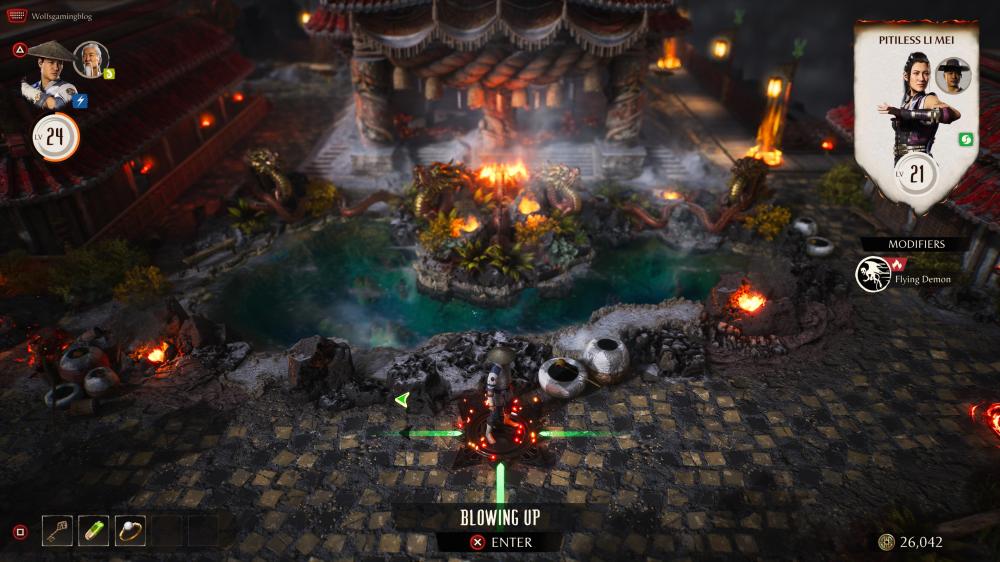
It’s surprising just how much Netherealm cut, too. Mortal Kombat 11 was jam-packed with content, from the Living Towers to the weird and wonderful Krypt. And yet, we’ve lost so much of that, including the awesome intros and outros in fights which helped give the game so much extra flavour, and small quality-of-life details such as being able to pin combos to the screen for quick reference. The customizable moves and variations of fighters are gone, there’s far less gear to play with (each character has one piece of changeable gear), and the starting roster is smaller. Despite being in development for four years, there’s a sense that Mortal Kombat 11 is a smidge rough around the edges and a tad thin on content.
It’s also frustrating to see that Quan Chi and Ermac are both in the first round of DLC despite already being in the game. You fight against both of them multiple times in the story, which makes the idea of him being locked behind a paywall infuriating. The same goes for Shang Tsung who was held back as a pre-order bonus and costs $8 to buy separately – he’s already in the game as a full character that you battle against numerous times, and briefly play as. It feels like a cheap tactic.
Which brings us to the monetization. Truthfully, there’s nothing too shocking here, which is neither good nor bad, it’s simply par for the course. A “premium” currency called Dragon Krystals can be bought with real money and then used to purchase different skins, taunts and other items for fighters. 500 Krystals costs $4.99, and buying larger amounts reduces the cost, thus 1250 Krystals is $9.99.
To the game’s credit, Invasion mode is very generous with its seasonal Koins which you can use to buy a variety of skins and gear for characters. Even after a few hours I had a heap of Koins and have already bought several skins and pieces of gear. I wouldn’t be shocked to see a patch that reduces the Seasonal Koins designed to nudge people toward Krystals instead but hopefully, they refrain from that.
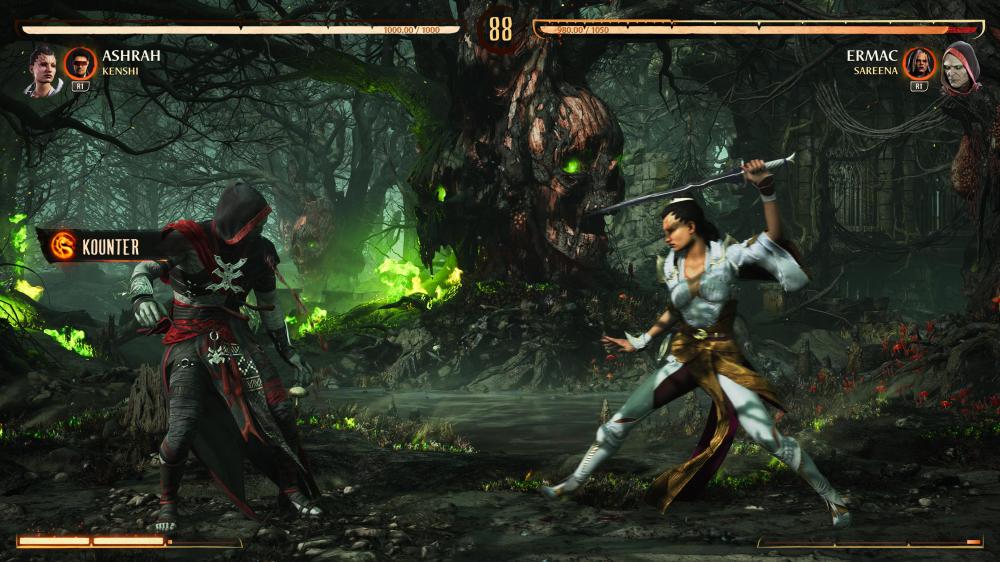
Finally, you also earn regular gold Koins that get tossed into The Shrine where they are melted down to form a random reward, like artwork, gear or the occasional Brutality. A small update needs to be released to fix this, though, because for now, you can only melt one batch of Koins at a time using an incredibly slow animation. It gets pretty boring pretty fast.
On the performance and overall polish Mortal Kombat 1 is quite impressive. Highlights include the absolutely gorgeous stages that are brought to life through the stellar use of HDR. Seriously, the colours are nearly bursting out of the screen, easily making this the brightest, most vibrant Mortal Kombat game to date. The level of detail on the character models is just as good, and like I mentioned before the cutscenes are beautiful. Another impressive aspect is how seamless the transitions into fights are, both from cutscenes and from the character selection screen.
The framerate is flawless, too, albeit with the notable exception of everything outside of fights being stuck at 30fps. It’s particularly annoying in the Fatalities because the switch from smooth 60fps to 30fps is jarring.
There’s a major exception to otherwise impressive quality, however: the Switch version. In fairness to the Switch release I have not played it personally, but every video, review and person out there seems to be in agreement that it is a steaming pile of Goro poop. The framerate is all over the place and the graphics have been severely downgraded to run on the far weaker Nintendo hardware, though it could certainly be argued that the fact it runs on the Switch at all is something of a minor miracle.
What I find peculiar is that Netherealm went to the trouble of creating a Switch version but didn’t also release it on previous-gen machines. There’s no PS4 or Xbox One version. It’s odd that they would choose to chase the extra sales on the weakest machine currently on the market and not also release it on the last-gen Sony and Microsoft machines.
You might have noticed a lack of attention given to the multiplayer modes, and that’s because I didn’t spend much time with them. I’m primarily a singleplayer guy when it comes to fighting games. What I did note was that multiplayer is a little rough around the edges, lacking in a lot of quality-of-life features that people have come to expect. For example, if you join a match in progress there’s way to spectate the action, leaving you to stare at a blank screen. You can’t queue up for a match while in another mode, either. And crossplay is promised for some time in the future but is absent at launch.
But on the good side, King of the Hill is back, the matchmaking is solid, the netcode works well and Kombat Leagues have returned, offering up cool rewards for those good enough to earn them. To put it simply, online hasn’t changed much from Mortal Kombat 11, for better or for worse.
So, does Mortal Kombat 1 reign supreme as Earthrealm’s undefeatable champion? No. It has plenty of strong points like the rebooted timeline being a lot of fun (even if Netherealm played it a little too safe, arguably) and a great story mode. It certainly looks stunning and runs great provided you don’t think about the Switch version. But there are a lot of weaknesses too, like Invasion mode being fairly flat and a multiplayer suite that lagging behind its competitors.
If, like me, you’re a Mortal Kombat fan then Mortal Kombat 1 is a no-brainer – it’s as fun as ever with a great roster and an excellent new Kameo system. However, if you’ve found yourself tiring of the MK formula over the past few games and were hoping the timeline reboot would herald a big new change, then MK1 isn’t going to change your mind. It’s a very safe release, and considering how incredibly popular the modern Mortal Kombat games are it’s understandable that Netherealm don’t want to change the formula too much lest it all end in a brutal Fatality.
